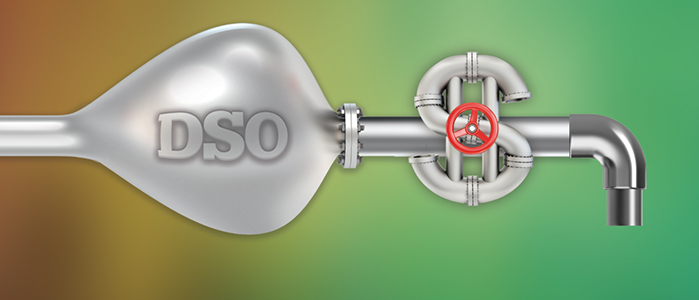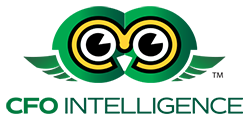Reforming cashflow … CFO Ralf Hermkens drove cultural change at form maker Doka USA

CFO Intelligence Magazine – Winter 2022
Ralf Hermkens
Doka USA, CFO
Reforming cashflow … CFO Ralf Hermkens drove cultural change at form maker Doka USA
In June 2020, Ralf Hermkens, a veteran CFO with experience on both sides of the Atlantic, along with Asia and Africa, joined Doka USA — the U.S. subsidiary of the family owned company Doka, which develops, manufactures
and distributes formwork technology for use in all fields of the construction sector.
The company’s products include formwork components, cost-optimized wall and slab formwork systems and load-bearing towers, high-performing crane-climbed and automatic climbing formwork and comprehensive solutions for building tunnels, bridges and power stations. Hermkens noted that the parent organization was in an enviable position with basically zero debt, but he also spotted a potential problem.
The good thing, he said, is that “We are a capital-intensive company, but everything, including capital expenditures, is financed by internal cash flow and company investments. Basically, the only external financing we use involves financial hedges to limit our international currency exposure. We also maintain lines of credit just in case we need them, but any LOC draws are quickly repaid.”
Cash-RICH, INCENTIVE-POOR
The downside to the company’s cash-flush situation was a lack of urgency about billing and collections. “I was surprised when I got here,” he recalls. “For example, because of the availability of in-house financing, a key performance metric, DSO [days sales outstanding], was not considered to be a big item. Funds were always made available after a call to European headquarters. This meant that our salespeople were more likely to give extensive concessions to customers and they did not push very hard when it came to collections.”
Hermkens was worried that this laid-back attitude could eventually crimp the company’s growth. Doka’s formworks are used by heavy construction companies to cast vital concrete components for complex projects — like Long Beach, Calif.’s Gerald Desmond Bridge, where two 516-foot-tall concrete towers anchor cables that support a 2,000-foot-long bridge deck connecting the Port of Los Angeles — that demand long lead times and can take years to complete. “During the life of a project like the new Gerald Desmond Bridge, which took some seven years to complete, we issue rental invoices on a monthly basis,” but he notes Doka USA has to recover its capital “over a long period of time.”
Hermkens saw the challenge as a change management initiative — driving a higher level of sensitivity around the cash management function — but he had to balance that against the traditional corporate culture. “Sometimes
you need a revolution,“ he says. “Once you accomplish that, it’s a matter of gentler continuous improvement.”
The key, he adds, is how a CFO executes on his or her vision.
“The CFO’s role differs significantly in a cultural sense, by country as well as by company,” he explains. “The U.S. is very much organized along hierarchies, similar to the military, and CEO is the ‘top dog;’ while in Europe, executive management is more about the team. Also, in Europe and Asia, the CEO is more focused externally, as a kind of spokesperson, while the CFO could be described as the interior minister, taking care of everything in the background.”
Doka USA is based on a U.S. acquisition and initially had a very traditional U.S. culture, so Hermkens anticipated some resistance to imposing more change and service orientation around the finance function.
“In all regions, though, it is always the CFO who has to ensure compliance with accounting and other laws, as well as safeguarding the company’s assets and cash flow on behalf of shareholders,” he notes. “Doka was performing well, despite the laid-back attitude towards cash management, but I was concerned about the foregone opportunity costs.”
To impart a sense of urgency among his immediate team and, equally importantly, Doka’s salespeople, Hermkens utilized a two-pronged strategy. Within the finance team, he introduced implied interest rates to project-costing calculations, “because when you have to factor that in, it’s easier to relate to the cost of capital.”
To get buy-in from sales personnel, Hermkens tweaked the compensation model to align with the new approach. “From that point on, salespeople did not receive their commission until the customer payment was received,” says Hermkens. “That really made them take notice.”
Did the new policy work out? “Within a year, our DSO improved by 30%,” he says. For Hermkens, this approach to management is an extension of his personal philosophy. “I always question how things are done,” he explains.
“I’ve worked at small companies and at large ones, and I’ve done consulting. Numbers are a tool, a means to building something sustainable, and that’s something I find enjoyable.”
SIDEBAR:
Change management is critical
To achieve economies of scale, many of Doka USA’s reusable concrete formworks are made in Europe and shipped to the U.S. in containers or on bulk carriers — although some customized and special panels are manufactured by third-party partners in North America. “Once we manufacture the formwork items and they land in our distribution centers, they become inventory and the cost is ours,” he explains. “So, we’ve got to coordinate site delivery with our customers to try to limit the idle time.”
The challenge starts with balancing the need to have just enough components on hand without developing a shortage. “A client may require 100 different formworks from us for a single bridge, building or other project,” says Hermkens. “But if we only have 99 available, that’s not acceptable.”
There are many contractors and subcontractors involved in larger construction projects, “and scheduling is key as often things have to change onsite, so we may only have a month or two of lead time prior to delivery,” he adds. “When that happens, we will juggle assets across our 10 domestic supply centers to still make it work for our partners, but this adds to our transportation costs.” Along with staying close to clients to keep up with their project progress, the company uses sophisticated, proprietary software to forecast specific formworks needs up to six months ahead.
“Our forecasting considers a variety of issues, including our pipeline of projects, our inventory, and our percentage of utilization,” Hermkens says. “But they’re all fluid since, for example, you can never be 100% certain when formwork will be returned from another project. If a client has site delays, it throws off their schedule and ours, and a boom-bust cycle develops. Often, even if we have an order in hand, we can’t be certain when a client will need our formwork, and construction progress is very difficult to estimate. And of course, everyone turns to the finance team to develop those models so our teams might offer better solutions to our valued customers.” <
